The remains captured in these photographs come from a small war museum in Orsogna, a small town in the interior of my home region, Abruzzo.
In World War II Orsogna and other towns – such as Ortona, where there is a memorial for the Canadian soldiers who fell in the Moro river fierce battle – were part of the German Gustav Line. They were theatre of bloody battles and still today, wandering around with a metal detector, it is possible to find a lot of things reminding of these tragic events. This is exactly what motivated a group of local historians to search for, collect and classify as many things as possible, and finally, with the help of the municipality, to organise them in a small museum.
Around Europe there are many museums that have on display this kind of things. However, what makes exhibitions of artifacts found on site special is their connection with the territory. In other words, the museum is just a part of a larger experience: it is impossible not to be touched by the fact that the tranquil small streets and the quiet green hills surrounding the town are the same ones where lives were mercilessly sacrificed in violent clashes. Of course, there are much bigger museums and much more material, such as that of the Battle of Normandy. But the simplicity of a small place off the beaten track offers a more direct involvement: it hits you right in the face and leaves you speechless. This is how I felt in front of this British Mk. II Brodie helmet, which shows the hole through which a man’s life was taken, perhaps not far from where I was.
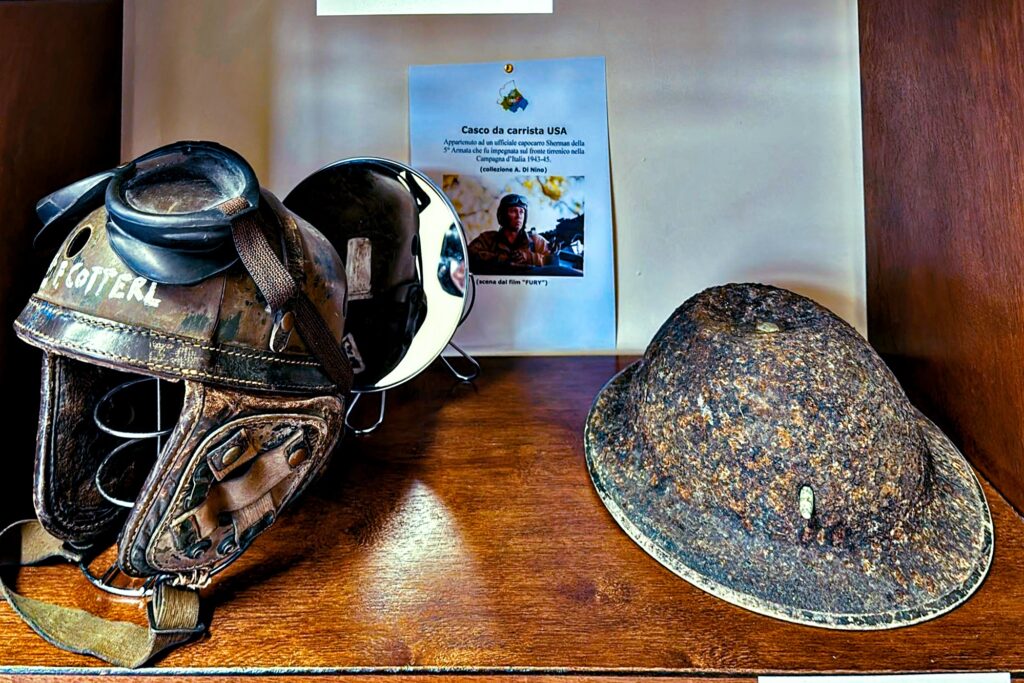 The header’s image of the post is an emergency rations tin used by British soldiers. It could have been restored for better display, but the museum curators decided otherwise to preserve the visual impact of the message.
The header’s image of the post is an emergency rations tin used by British soldiers. It could have been restored for better display, but the museum curators decided otherwise to preserve the visual impact of the message.
The Wermacht M40 helmet on the left is the same used by the German army in the Stalingrad Battle, while the one on the right was used by Luftwaffe. In the middle, a pair of 6×30 Dienstglas Binoculars. This display illustrates key elements of German combat gear reflecting both the Wehrmacht’s and Luftwaffe’s presence in the Italian theatre of operations
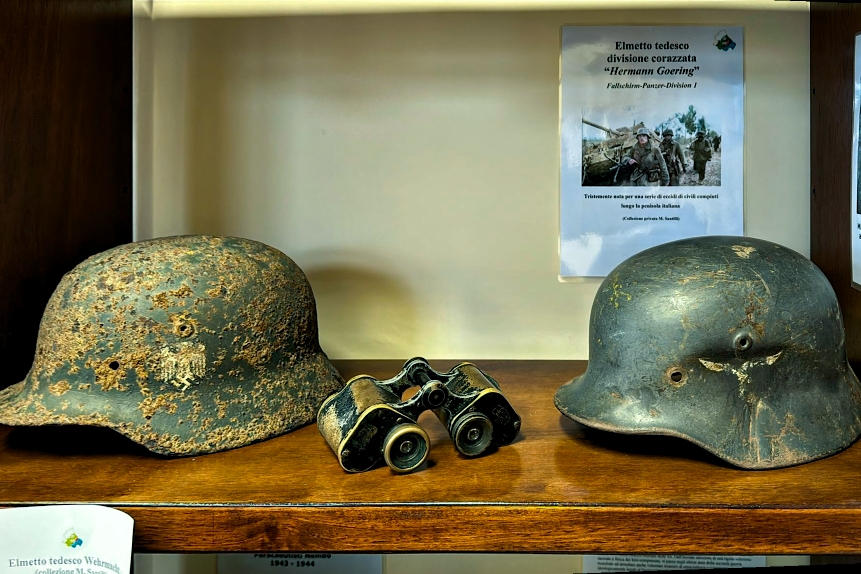
Soldiers from New Zealand and India also fought here. Recently, the museum curator told me, a Maori man came all the way from his country to see the place where his ancestors fought. There are also rupees and small elephant pocket statues that belonged to the soldiers of the Indian division who fought alongside the British, New Zealand and Canadian contingents. Once again, finding them in such a distant place makes you think.
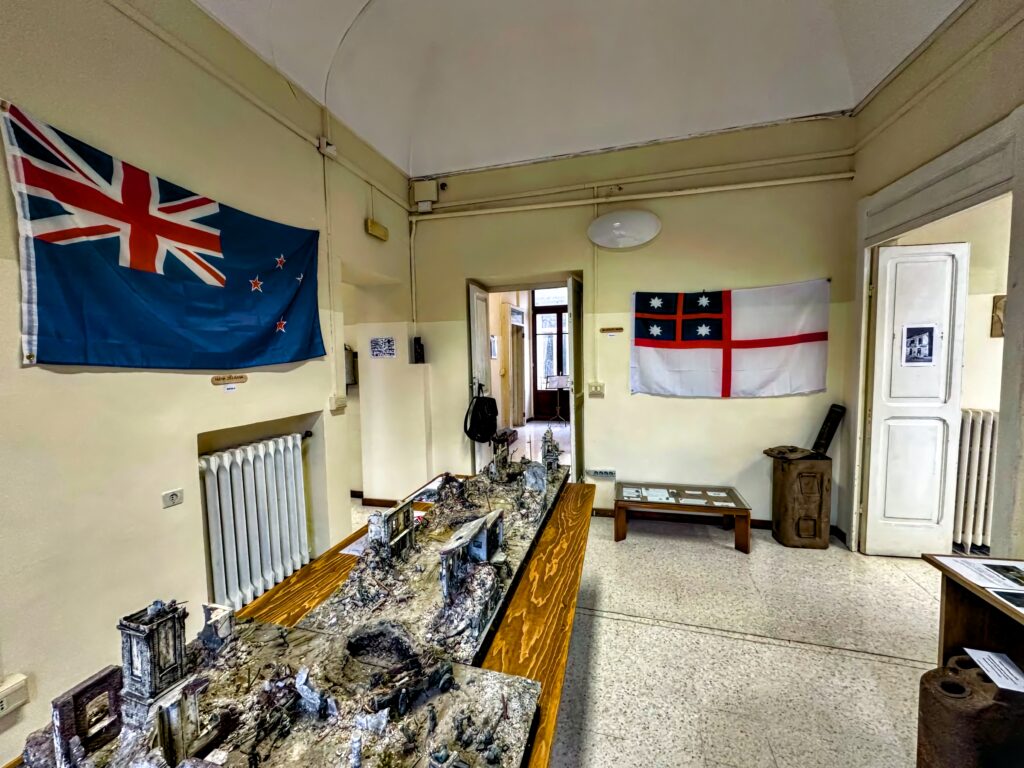
The dioramas on display in the museum are not just a casual representation of the situation at the time. This one shows the anti-tank strategy used by the Germans: they demolished the houses to clutter the road and force the Shermans to climb, exposing their belly and making them easier to hit from below.
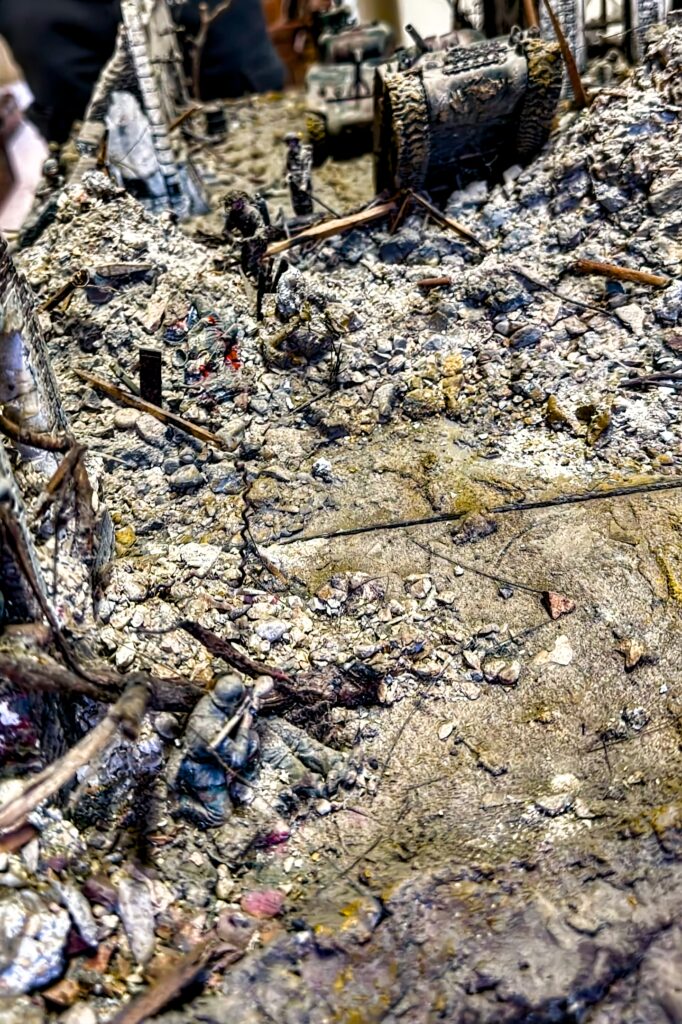
So far the museum only occupies one floor of the old Lower Courthouse (the builiding it is housed in), but there are many things that are waiting to be sorted, and many more to be found. Notwithstanding, also in its present state the place resonates with powerful vibes of sadness.
I don’t believe that the technical aspects of the photographs actually matters in this post. But just for the record, I took them with an iPhone 14 Pro Max.
Share this post:
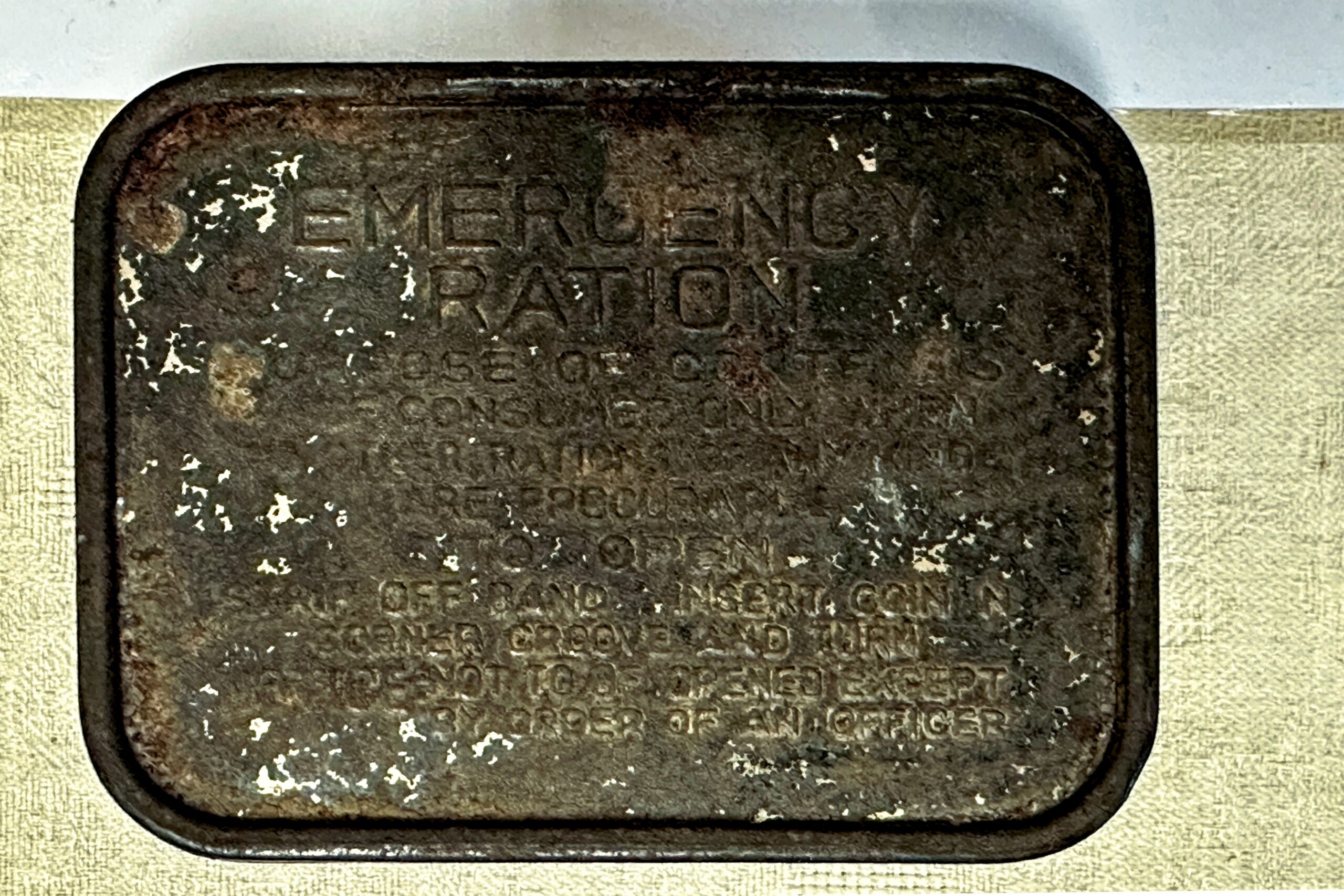

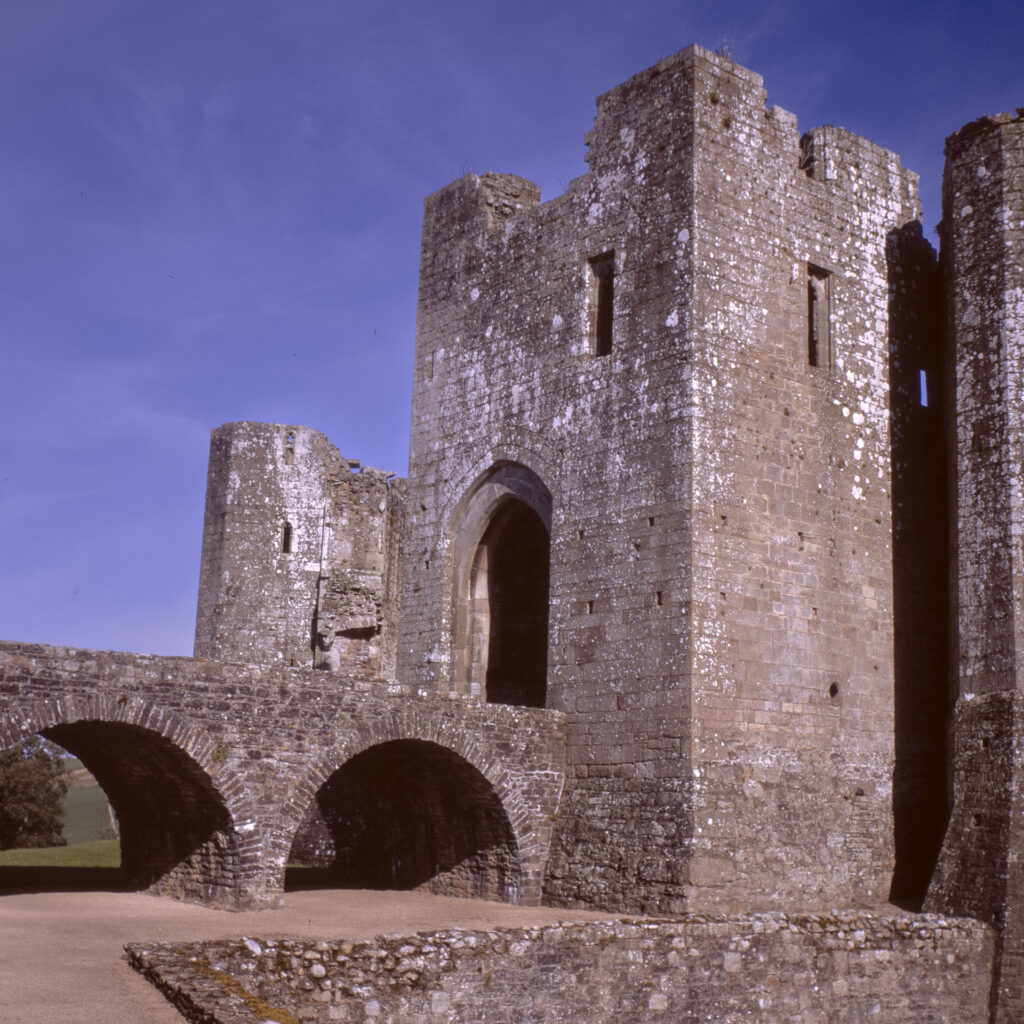
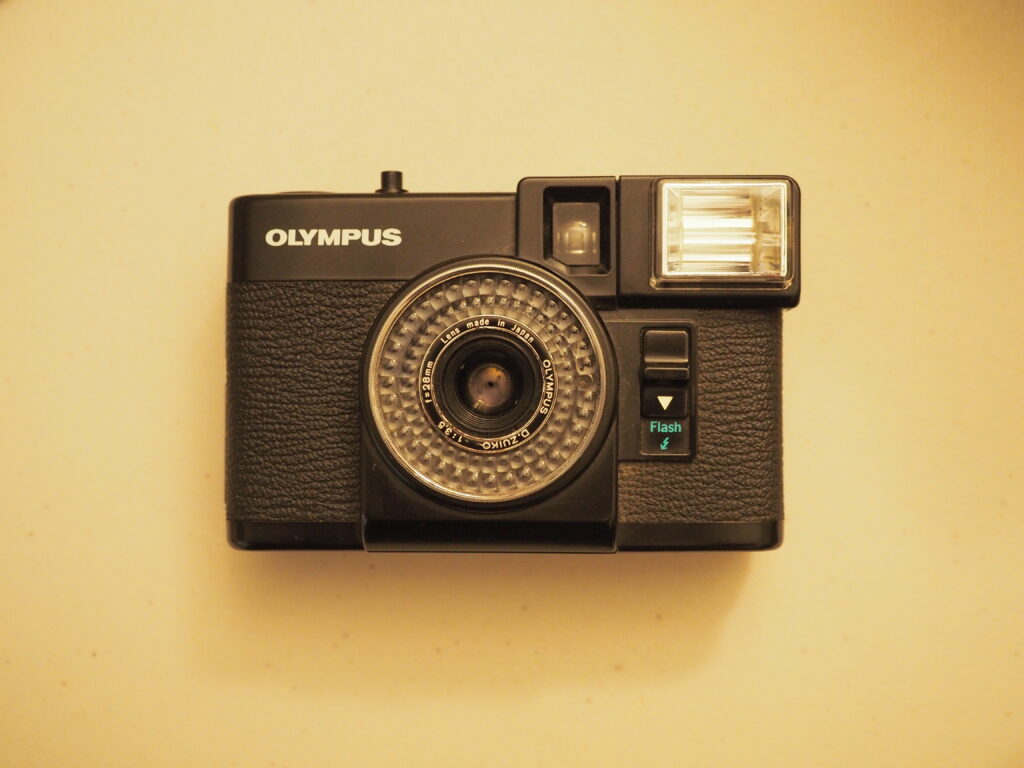
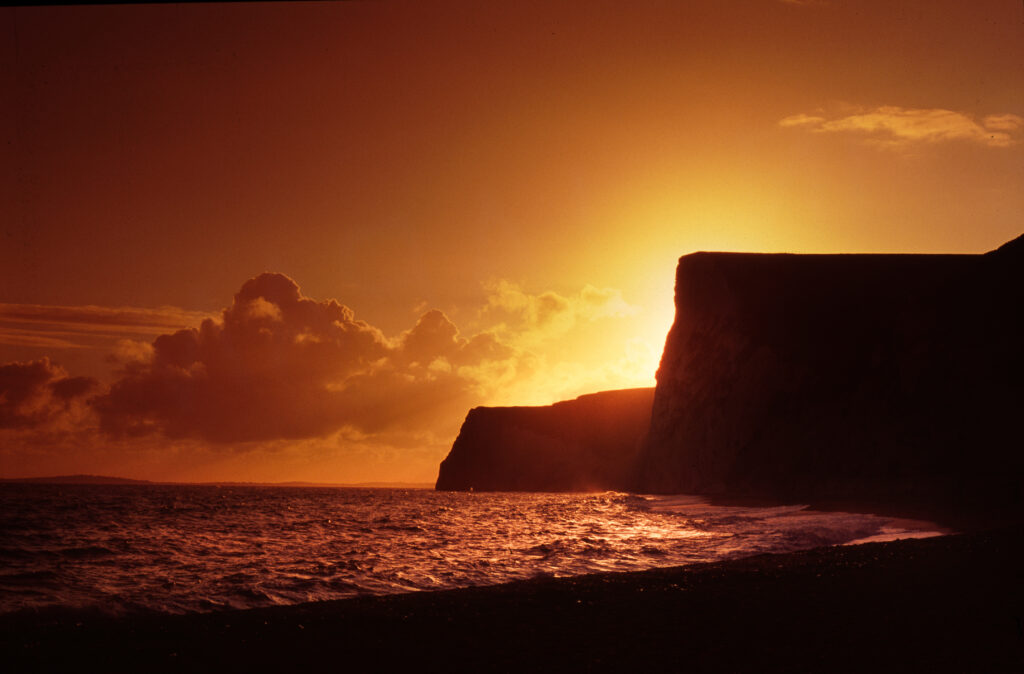




Comments
Tony Warren on 5 Frames from our Tragic Past Shot with an iPhone 14 Pro Max
Comment posted: 04/04/2025
The wide angle rendering and very clear imaging are very 'phone-like and more than adequate.
Comment posted: 04/04/2025
Graeme Stevenson on 5 Frames from our Tragic Past Shot with an iPhone 14 Pro Max
Comment posted: 05/04/2025
The recent article struck home for me as my great uncle Hugh McKillop Stevenson serving with the Royal Scots Fusiliers was killed during the battle to cross the Moro River on 22/11/43. His grave is in the Moro River Candian War Cemetery, listed as follows.
Service Number: 3133008
Royal Scots Fusiliers 2nd Bn.
Died 21 November 1943 Age 24 years old
MORO RIVER CANADIAN WAR CEMETERY
IX. H. 15.
Italy.
No member of the family has ever visited the grave, its location was unknown for maybe 60 years, and no photograph exists of the gravestone. Just recently the letter informing his family of the death was discovered in family archives. So, your article is a timely addition to our knowledge as this is a poorly documented part of the allied campaign in Italy. I have more information that may be of interest to the museum. I tried to contact you through your website, but the contact page is not working.
Many thanks once again, it is wonderful to know that the memories of these men are being looked after.
Cheers
Graeme I Stevenson
Comment posted: 05/04/2025
Comment posted: 05/04/2025
Geoff Chaplin on 5 Frames from our Tragic Past Shot with an iPhone 14 Pro Max
Comment posted: 07/04/2025
Chuckster on 5 Frames from our Tragic Past Shot with an iPhone 14 Pro Max
Comment posted: 12/04/2025